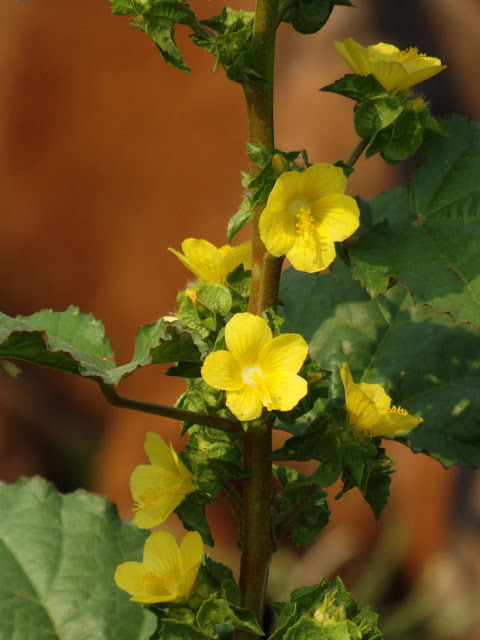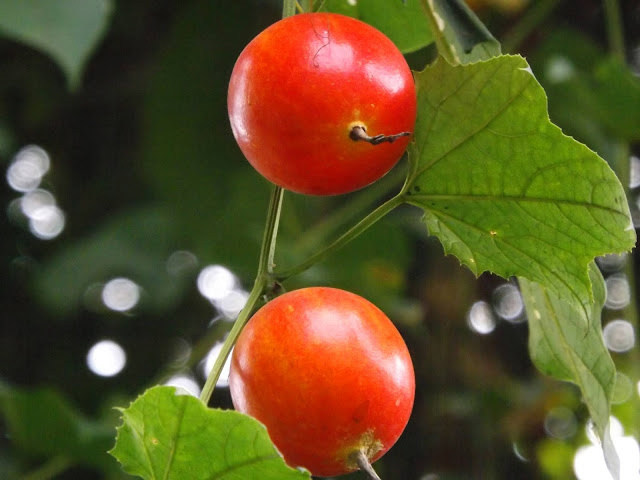Braziler Paat or Brazil jute, Malachra capitata
Braziler Paat or Brazil jute (Malachra capitata, family: Malvaceae) is a useful tropical erect herb or undershrub with hairy body. Stem is slender and reddish. The leaves have also reddish marks at the edge. It can get a height of up to 2 m. The annual (or perennial) is found throughout the tropical regions of the world.
Other name: Bon vingdi.
The size and shape of the leaves may vary. It can be orbicular to suborbicular or ovate, many-lobed, cordate at base, blunt or acute at tip, edge serrated, alternate, 6-16 cm in diameter; long-petioled, almost the half of the length of leaf. Both sides of the leaf is hairy. The petiole is not directly connected to the blade but connected by creating angles to the bottom.
The plant is found in fallow lands, roadside areas and near the water-bodies of Dhaka and the neighbouring districts of the country.
Strong and soft silky fiber is made from its stem, which has been recommended as a substitute for Jute. The plant is considered as an emollient and pectoral.








Comments
Post a Comment